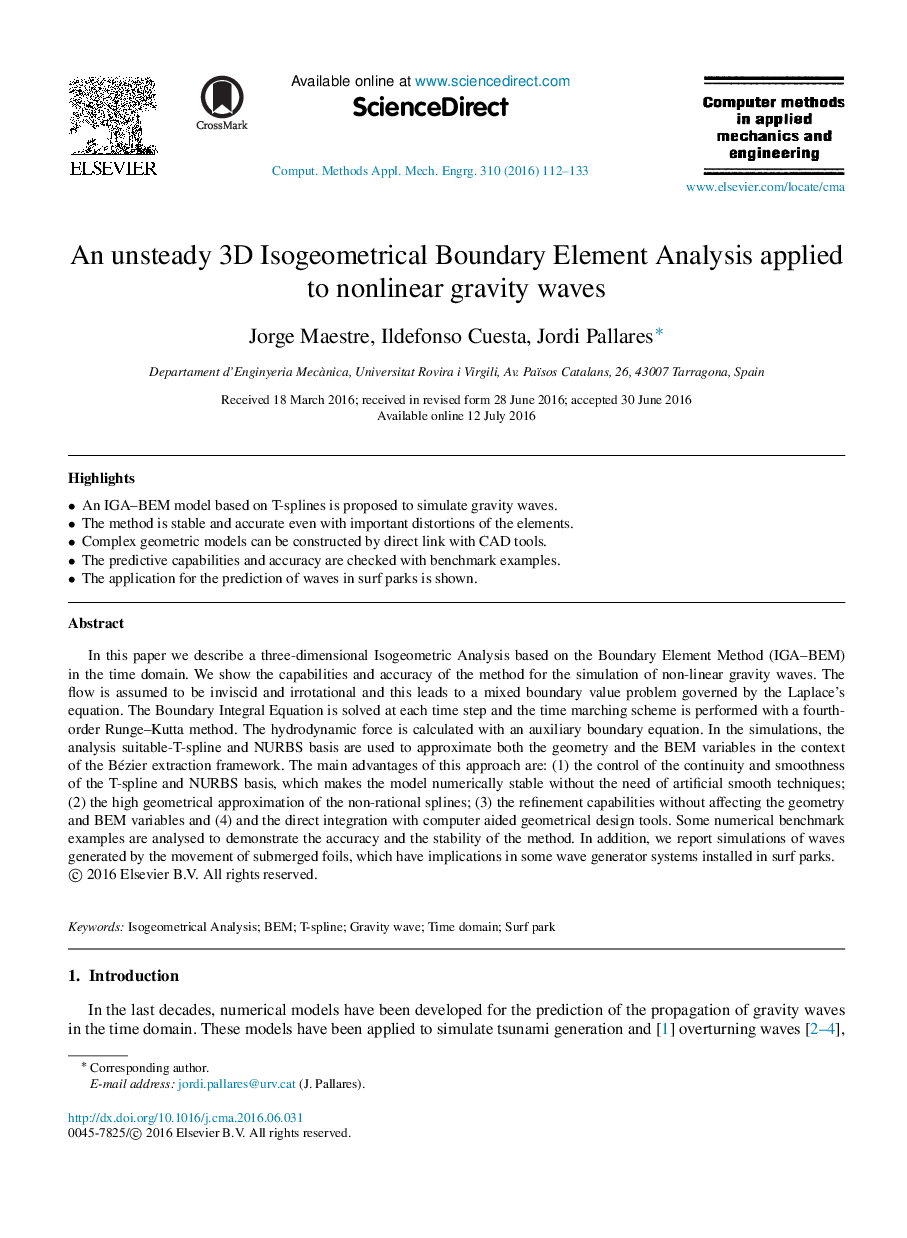| کد مقاله | کد نشریه | سال انتشار | مقاله انگلیسی | نسخه تمام متن |
|---|---|---|---|---|
| 497576 | 862924 | 2016 | 22 صفحه PDF | دانلود رایگان |
• An IGA–BEM model based on T-splines is proposed to simulate gravity waves.
• The method is stable and accurate even with important distortions of the elements.
• Complex geometric models can be constructed by direct link with CAD tools.
• The predictive capabilities and accuracy are checked with benchmark examples.
• The application for the prediction of waves in surf parks is shown.
In this paper we describe a three-dimensional Isogeometric Analysis based on the Boundary Element Method (IGA–BEM) in the time domain. We show the capabilities and accuracy of the method for the simulation of non-linear gravity waves. The flow is assumed to be inviscid and irrotational and this leads to a mixed boundary value problem governed by the Laplace’s equation. The Boundary Integral Equation is solved at each time step and the time marching scheme is performed with a fourth-order Runge–Kutta method. The hydrodynamic force is calculated with an auxiliary boundary equation. In the simulations, the analysis suitable-T-spline and NURBS basis are used to approximate both the geometry and the BEM variables in the context of the Bézier extraction framework. The main advantages of this approach are: (1) the control of the continuity and smoothness of the T-spline and NURBS basis, which makes the model numerically stable without the need of artificial smooth techniques; (2) the high geometrical approximation of the non-rational splines; (3) the refinement capabilities without affecting the geometry and BEM variables and (4) and the direct integration with computer aided geometrical design tools. Some numerical benchmark examples are analysed to demonstrate the accuracy and the stability of the method. In addition, we report simulations of waves generated by the movement of submerged foils, which have implications in some wave generator systems installed in surf parks.
Journal: Computer Methods in Applied Mechanics and Engineering - Volume 310, 1 October 2016, Pages 112–133
